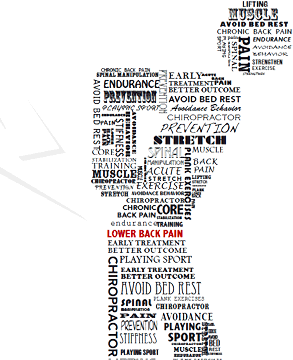Back to Basics: Understanding Back Pain
By Dr. Jasper Sidhu
Despite the amount of information available on the Internet these days, many people still do not have the proper facts on back pain. Perhaps it's due to information overload or just misinformation.
Regardless of the reason, there are too many people suffering from back pain and not enough understanding of
the causes and potential solutions. Let's try and change that by looking at the basics of back pain.
First, understand that back pain is not due to one and only one cause. That would make everyone's job so much easier. Just imagine going to your car mechanic and knowing anything and everything that might be wrong with your car had only one cause. Life would be so much easier that way, but it's just not the case. Back pain is no different. It can be caused by a multitude of things involving bones, muscles, nerves or even psychological factors.
Second, many people with chronic pain think their back pain will never go away. Considering that chronic low back pain costs society up to $100 billion a year in health care utilization, workers' compensation, etc., it's hard to imagine that most of the back pain out there actually gets better, but surprisingly, it usually does. But if that's the case, then why is low back pain such an epidemic?
For a long time (and in some cases even today), patients and health professionals alike had similar views regarding back pain. When you came into the office, the priorities were to find out what was wrong, where the pain was coming from, and then address the structure (part of your body) that needed addressing. That's it. Sounds straightforward, but this is actually the wrong way to look at back pain.
 For example, a person with leg numbness may go get an MRI done, and it may show that they have a "disc bulge" at L5 (the fifth lumbar vertebra in the back). Believing that L5 is causing the person's leg numbness, more often than not, a surgeon would go in and operate on that L5. However, did you know that some people who have no back pain can also have a disc bulge at that level showing on the MRI? What this means is that what you see on an imaging test is not necessarily where the pain is coming from.
For example, a person with leg numbness may go get an MRI done, and it may show that they have a "disc bulge" at L5 (the fifth lumbar vertebra in the back). Believing that L5 is causing the person's leg numbness, more often than not, a surgeon would go in and operate on that L5. However, did you know that some people who have no back pain can also have a disc bulge at that level showing on the MRI? What this means is that what you see on an imaging test is not necessarily where the pain is coming from.
Let's divide low back pain into two different conditions and discuss the general facts about how to deal with each one. We call low back pain that is quite recent acute low back pain. This can range from pain that is present for several minutes to several days. The second category of back pain is chronic low back pain. This pain persists for three months or more.
ACUTE LOW BACK PAIN: Early treatment leads to better outcomes
If you've suffered from low back pain over the past few days, or if you get back pain sometime in the future, the tendency will be to wait it out and see if it gets better. Sometimes we even decide to take time off and lie in bed, hoping we will eventually be feeling better and back to our usual activities or work. However, more and more research shows that lying in bed or waiting it out is the worst thing you can do for yourself. Remember, only 10 percent of people develop chronic low back pain, but those cases account for an estimated $100 billion a year in health care and other costs. It's a safe bet that most of them have taken this incorrect "wait and see" approach.

